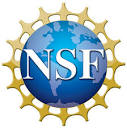The National Science Foundation has once again made some key changes to their SBIR/STTR program and application process.
These changes are highlighted on the first couple pages of the solicitation, but probably the most obvious one is that they are moving to three submission window close dates per year instead of the previous four. The close of window dates are March 3, June 30, and October 26 of 2022. NSF has also increased the Phase I funding to a maximum of $275,000, which is intended to keep up with inflation. There are new required formats for Biographical Sketches and Current & Pending Support. Additionally, the format of the Elevator Pitch and Project Description sections have been modified. The Elevator Pitch includes sections marked: The Motivation; The Customer; The Value Proposition; and the Innovation. The project description incorporates some recently past modifications but includes: The Commercial Opportunity; The Technical Solution; The Company/Team; Intellectual Merits; and Broader impacts. The Technical Merit is required to be a least 5 pages of the 15 page limit.
They continue to require an official invitation that comes from applicants first submitting a Project Pitch and only one Project Pitch submission is permitted per applicant for each submission window. This includes instances where Project Pitches are not accepted. The NSF states: Project Pitches that are not invited to submit a full proposal may resubmit a Project Pitch (with revisions to address any deficiencies) in the next submission window.
Please also note that, effective February 28, 2022, NSF will transition from DUNS numbers to the New System for Award Management (SAM) Unique Entity Identifier (UEI) in NSF systems.
Finally, we would like to encourage first time applicants or those who have not yet been awarded an NSF SBIR/STTR to apply. NSF has a bias towards funding first time winners for Phase I. They do certainly fund companies that have previously been awarded an SBIR or STTR, but they actively seek to fund those companies that they have not funded before. Contact us for guidance on how to prepare a strong project pitch…..in the meantime watch our quick video or read our blog on the topic

